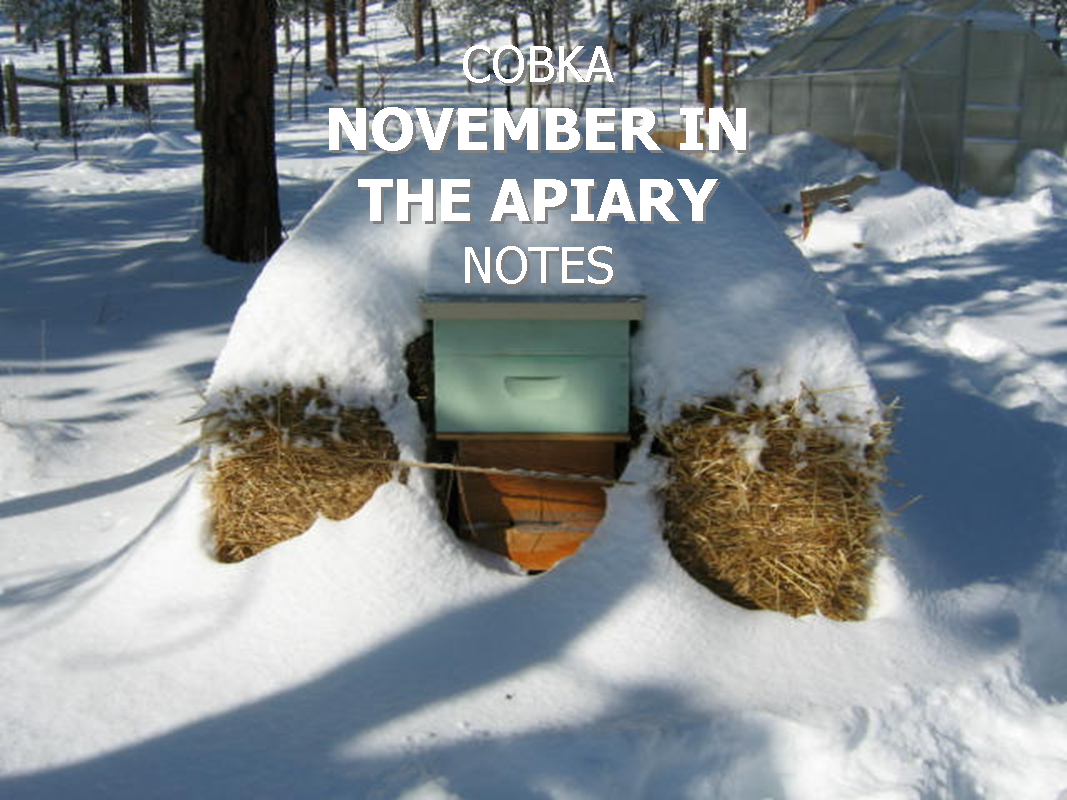|

Caring for Your Bees in November
As our weather marches rapidly into blustery, cold and damp conditions our last ditch efforts to ensure our bees can survive and be comfortable throughout the winter become paramount. By this time most beekeepers have pulled their honey supers, making an educated guess as to how much food stores to leave behind. How much is enough? With so many known and unknown variables impacting this decision it is difficult to provide a definitive answer. Some say a minimum of 80 pounds of honey, a full deep’s worth, should be provided. Inexpensive luggage scales can be used to determine the hive’s weight. Others suggest hefting the hive from the rear with one hand to assess the quantity of stores. The saying goes, “If it hurts my hand to lift the hive they have enough.” If stores are light then one may feed sugar syrup at a 2:1 ratio (2 parts sugar to 1 part water by volume) using an internal feeder as long as daytime temperatures remain above 50 degrees. As our temperatures dip liquid feeding will have to be replaced by using candy boards or fondant.
What is equally important, if not more, is where the honey is stored in the hive. It must be adjacent to and easily accessible by the winter cluster for it to be of any value. So on your final hive inspection it is critical to ensure there are full frames of honey surrounding the brood nest. The goal is to have a broad horseshoe shaped band of honey from corner to corner around the frames. Pollen is also important. Followed by a narrower band of pollen providing feed for next year’s first newborn bees. This will help ensure the cluster does not work itself into a corner and starve. Pollen procured from a reliable source may be processed through a coffee grinder and placed in an open or internal feeder for the bees to collect and store.
As the colony is becoming broodless at this point in the year a final varroa treatment might be in order. A test using the sugar roll or alcohol wash method is done to determine mite levels. If the test reveals more than one mite per 100 bees then the beekeeper may wish to treat using oxalic acid. Although there are some promising application studies being conducted even as we speak the only legally approved methods for oxalic acid is the sublimation (vaporization) or dribble methods. Care must be taken to follow exactly the label directions and safety procedures for using these methods. And, of course, it is important to then retest after treatment to ascertain its efficacy.
To make the bees home more comfortable and safe it is helpful to remove any empty boxes making the hive’s size commensurate with the size of the colony. A quilt box or other top box with insulation can be added to provide additional insulation and control condensation. Bees seldom succumb to cold but will die quickly if wet from condensation raining down from the top of the hive. In high wind areas provide protection using tie downs and windbreaks such as straw bales. Wrapping hives with insulating materials is viewed as important in regions which suffer more intense winters than we have here in Central Oregon. The hive needs to be able to breathe. Closing off screened bottom boards can reduce drafts from below. Reducing the entrance to bee space dimensions will also reduce drafts and provide protection against mice.
Knowing you have done all you can to prepare your colonies for the trials and tribulations of winter will help not only them survive but allow you to rest comfortably too.
Thanks to Clyde Dildine for these November notes!